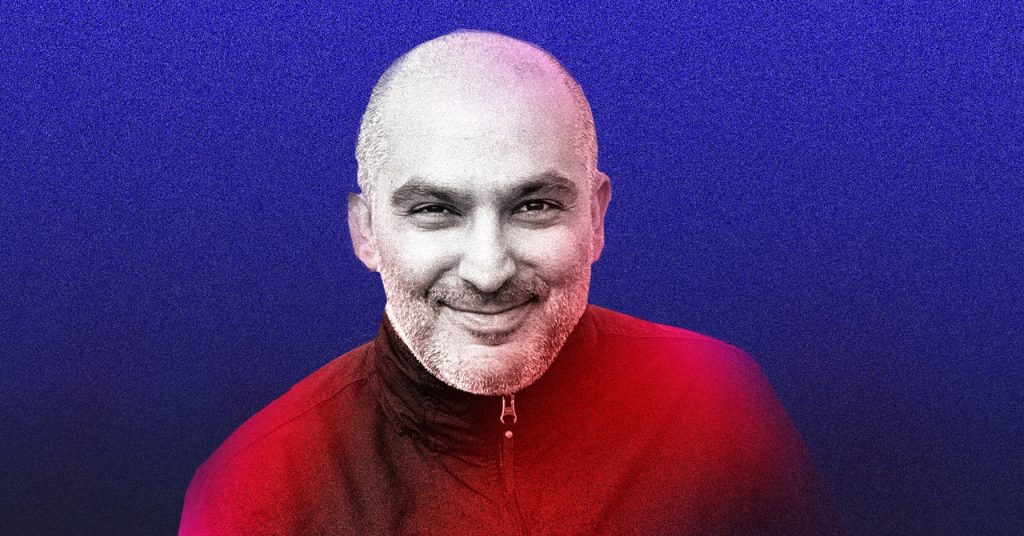Designing the Future of Neurotech: An Interview with Afshin Mehin
The Go-To Designer for Brain-Computer Interfaces
Afshin Mehin, the founder of San Francisco-based creative agency Card79, has become the go-to designer for companies working on devices that aim to tap into or modulate the brain. His agency has collaborated with prominent neurotech companies such as Neuralink, a startup founded by Elon Musk that develops brain-computer interfaces, Synchron, a company working on a brain implant to treat Alzheimer’s patients, and Science Corp., a startup founded by former Neuralink president Max Hodak that is developing a visual prosthesis for the blind.
Designing for the Anatomy of the Head
Mehin’s experience in designing wearables for the head dates back to his work with Recon Instruments, a Vancouver-based company that was eventually acquired by Intel. The work involved understanding how to incorporate technology around the head, such as adding an extra processor and a camera to sports sunglasses for running and cycling. This required 3D scans of people’s heads and databases of skull anatomy to ensure a proper fit.
Empowering Paralyzed Individuals with Neuralink
Card79 started working with Neuralink in late 2018, focusing on designing the external parts of their brain-computer interface system, including the installation robot and a wearable device that would sit behind the ear to transfer data and power to an implanted wireless receiver. The design process involved secondary research to understand the pain points and needs of paralyzed individuals, with the goal of empowering them to do things they were previously unable to do.
Transforming the Neuralink Robot for Clinical Trials
One of the challenges Mehin faced was transforming Neuralink’s first-generation robot, which had an exposed steel design, into something more approachable and ready for clinical trials. The Card79 team worked with Neuralink’s engineering team to design facias, or covers, for the outside of the robot to give it a simpler and less intimidating visual language. Safety considerations, such as avoiding pinch points that could crush operators’ hands, were also taken into account during the design process.
The Exciting Potential of Neurotech and AI
Mehin is inspired by the work being done in the neurotech space, particularly in helping the most vulnerable, such as paralyzed individuals. He sees great potential in the combination of AI and neurotech to solve practical problems and improve people’s lives. However, he also expresses concerns about the potential dystopian futures that could arise from the extensive data collection necessary for AI to work effectively with neurotech devices, and the impact on privacy and cognitive liberty.
Ethical Considerations in Neurotech Design
As a consultant, Mehin acknowledges that he doesn’t always have access to the long-term business roadmaps of his clients. However, he emphasizes the importance of understanding the background and worldview of the founders he works with. He would turn down a project if he felt that it was ethically questionable, although he notes that it can sometimes be difficult to differentiate between ambition and nefariousness in the world of startups.
I’m always inspired by the people doing work in this space in terms of founders, scientists, technologists, neuroscientists, and personally it’s just really cool that the feat of this technology is unlocking big philosophical questions about how the brain works and what it means to be human.

6 Comments
Aria Turner: If this robot’s story doesn’t make you ponder the future of medicine, nothing will!
Ezra P. Turner: Turns out, the true artist behind Neuralink isn’t a who, but a what!
So a surgical robot is now playing fashion designer in the O.R.? Talk about a career switch!
The future of surgery is looking stylish, thanks to Neuralink’s new robotic Picasso!
Aria Simmons: Cutting-edge brain surgery or sci-fi horror story? Neuralink blurs the line!
Aria Patel: Neuralink’s robot might just be the unsung hero surgeons never knew they needed.